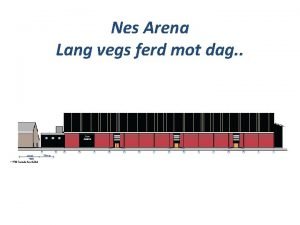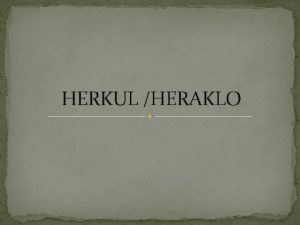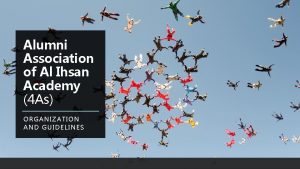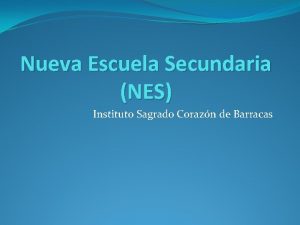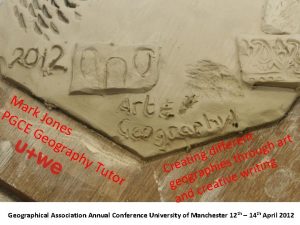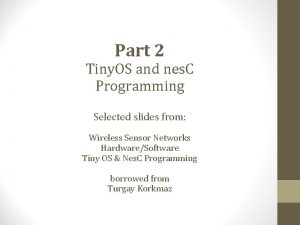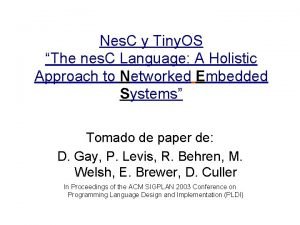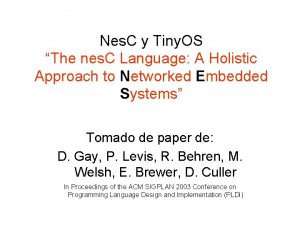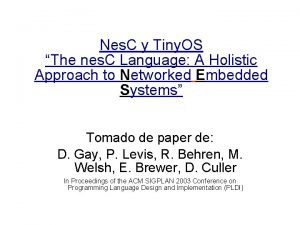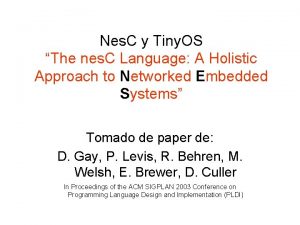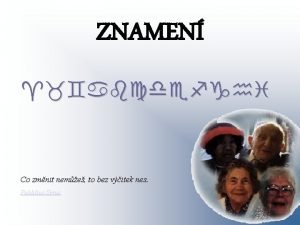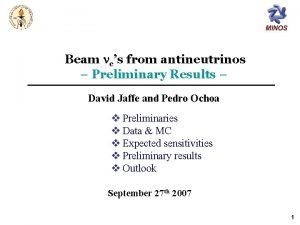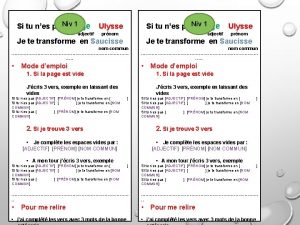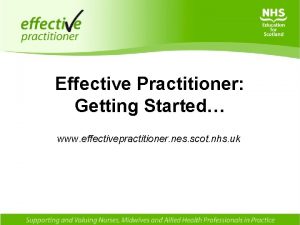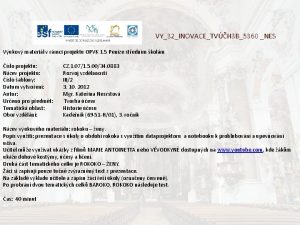Ma r PG k Jo CE nes Ge

















- Slides: 17

Ma r PG k Jo CE nes Ge ogr aph y T uto r t t n r e a r e h f f g i u d o g r n h i t t s a g e e n i i r t h i C r p a w r g e o v i e t g a e r c d n a Geographical Association Annual Conference University of Manchester 12 th – 14 th April 2012

In his chapter ‘Geography through art’ Brough (1983) presents us with a challenge that ‘Few [geography teachers] are alive to quality and beauty in architecture and landscape, are visually literate or sensitive to the importance of shape, tone, colour or style’ (p. 60). Reference Brough, E. (1983) ‘Geography through art’, in J. Huckle (ed. ) Geographical Education: Reflection and Action, Oxford: OUP.

Background to the session: This workshop explores how PGCE Geography and PGCE Art and Design students at UWE collaborated on a creative geography-art project. Choosing six media to work with the PGCE students used geographical themes and issues as context. They then spent a day in a local partnership college with year 8 s being creative. Wire work; Ceramics; 3 D modelling; Pin hole cameras; textiles and mod-roc. This workshop explores one of these approaches: using mod-roc to learn through landscapes

Mod roc landscapes Ingredients: • • • Being taught to mod-rock by a year 8 student • Wet a strip of mod-roc ( and drain off excess so not too wet) • Lay some mod-roc to form base on board. • Lay scrunched up newspaper, string etc. . on board to form landscape and cover in mod-roc strips Small base Mod-roc strips Water Newspaper, string etc. . Paint

Let’s mod roc Year 8 Students and PGCE students (and tutor’s) work

Q) But I can’t justify all that time on making these things – what will my head of department say? A) So let’s support students’ literacy through these activities: As well as speaking and listening through the co-construction of landscapes (teacher and student/s) Use the landscapes for different types of writing (or voice overs). Remind students of ‘writing for reading’, to consider genre, audience and purpose. Develop with students a number of writing support mats *see example on next slide – engage them in the process of making the literacy support mats. You can emphasise non-fiction writing such as persuasive writing or explanation. You can also use these as a starting point for creative writing such as fiction and poetry.

Coastal management, retreat, Increasing risk, storm surge, waves , tides, management, hard engineering, sea walls, gabions, revetment, rip-rap, groyne, cliff-foot, cliffface, drainage, beach nourishment , reprofiling, dune regeneration, offshore reefs, mangroves, Shoreline management plans (SMPs), Integrated coastal zone management (ICZM), sustainable futures. Features - headland, bay, cliff, notch, cave, geo, blow-hole, arch, stack, stump, reef, beach, spit, bar… Processes- Erosion, (abrasion, attrition, hydraulic action, solution) Sub-aerial weathering, transportation, deposition, dynamic. . Geographical words Literacy reminders landslip cliffs beach arch Coasts Mod roc Cause and effect Resulting in ; consequently; triggering, My image Connectives Creative writing Personification – give your landscape human qualities ’Old Harry was a tough guy’ Alliteration – use the same letters at beginning ‘collapsing cliffs’; shifting sands… stacks Sea wall Rip-rap Text types Non-fiction: Instruction, recount, explanation, Information, persuasion, discursive writing, analysis, evaluation. , Comparison Whereas, compared to, however, similar, different Rhyme - similar sounds such as ‘Waves and tides are on the march, headlands sculpted into caves and an arch’# Haiku – poetry involving 3 lines of 5, 7 and 5 syllables Coastlines are changing, Natural landscapes no more Hard and soft choices

You can use this to answer GCSE style questions such as Q) For a named coastal feature, explain its formation? Q) Describe the coastal landforms you see in the model? Text types Non-fiction: Instruction, recount, explanation, Information, persuasion, discursive writing, analysis, evaluation

Use the models as revision aids or to start a topic by exploring text book representations of landscapes What am I ? Wadi Pedestal rock Salt pans Can you see me? Wadi, flash flood, , salt pans, pedestal rock?

For recounting actual events or being creative with fictional eruptions Breaking news, the long dormant volcano, Mt. Firey is showing signs of awakening. On Monday 6 th February, , 2012 it was reported …

Creative writing -1 Another day and I have already been trampled on by the walkers not sticking to the marked paths, my eroded parts are getting really bad… A day in the life of Larry the Landscape

Creative writing -2 Coastlines are changing Natural landscapes no more Hard and soft choices haiku

Creative writing - 3 The sea runs back against itself With scarcely time for breaking wave To cannonade a slatey shelf And thunder a cave Opening lines to poem called Winter Seascape by John Betjaman

Q) But what about Ofsted ? Geography Survey Visits – Ofsted, 2012. Outstanding Achievement of pupils in geography ‘They show significant levels of originality, imagination or creativity in their understanding and skills within the subject’ The quality of teaching in geography ‘They use a wide range of innovative and imaginative teaching strategies very effectively to stimulate pupils’ active participation in their learning The curriculum in geography ‘The imaginative and stimulating geography curriculum is skilfully designed to match to the full range of pupils’ needs Quality of leadership and management of geography ‘Geography has a very high profile in the life of the school and is at the cutting edge of initiatives within the school. ’ Reference : Geography Survey Visits -supplementary subject-specific guidance for inspectors on making judgements during visits to schools (Ofsted, 2012)

Students are likely to remember doing these types of activities, in the same way that they remember fieldwork and trips. We might even borrow some evidence from learning outdoors through fieldwork and suggest that learning through art like learning through fieldwork could potentially lead to ‘memorable episodes’ – these are associations with memorable experiences that can aid long term memory retention amongst students (see Mac. Kenzie and White 1982)(1 Q) But what about the time needed? A) Use cross-curricular days, theme days and collapsed curriculum days; geography club; having students doing this at options evenings and parents’ evenings; group model large scale – all contribute a particular feature to a larger model. Can be done in 2 or 3 lessons ( lesson 1 - make; lesson 2 - creative writing or speaking and lesson 3 - presentations(peer and self assessment).

References and useful resources Useful resources: Owen Sheers (2009) A Poet’s Guide to Britain, Penguin Classics. Poems on : London and Cities Towns and Villages Mountains and Moorlands Islands Woods and forest Coasts and Sea References Brough, E. (1983) ‘Geography through art’, in J. Huckle (ed. ) Geographical Education: Reflection and Action, Oxford: OUP. Mac. Kenzie, A. A. and White, R. T (1982) ‘Fieldwork in geography and long term memory structures’, American Educational Research Journal, 19 (4), 623 -632.

Acknowledgments: Thank you to: Simon Huson PGCE Art Tutor. The Art and Design and Geography PGCE students, UWE 2011 -2012. Heather Evans and Year 8 Panther students at Brislington Enterprise College (Bec), Bristol. Images Slide 7 – all images from www. geograph. org. uk licensed for reuse under Creative Commons Licence All other photographs Simon Huson Email: Mark 7. Jones@uwe. ac. uk
